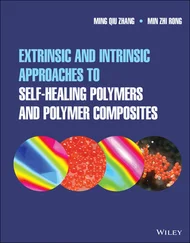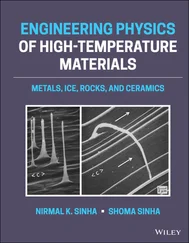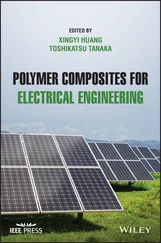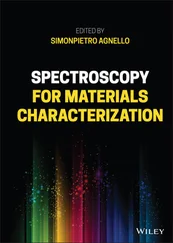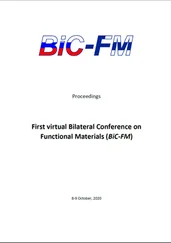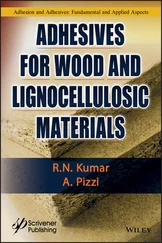1 Cover
2 Title Page
3 Copyright Editors Ye Zhou Shenzhen University Institute for Advanced Study Room 358, Administration Building 518060 Shenzhen China Guanglong Ding Shenzhen University Institute for Advanced Study Room 400-3, College of EST 518060 Shenzhen China Cover © Alexa_Space/Shutterstock All books published by Wiley-VCH are carefully produced. Nevertheless, authors, editors, and publisher do not warrant the information contained in these books, including this book, to be free of errors. Readers are advised to keep in mind that statements, data, illustrations, procedural details or other items may inadvertently be inaccurate. Library of Congress Card No.: applied for British Library Cataloguing-in-Publication Data A catalogue record for this book is available from the British Library. Bibliographic information published by the Deutsche Nationalbibliothek The Deutsche Nationalbibliothek lists this publication in the Deutsche Nationalbibliografie; detailed bibliographic data are available on the Internet at < http://dnb.d-nb.de >. © 2021 WILEY-VCH GmbH, Boschstr. 12, 69469 Weinheim, Germany All rights reserved (including those of translation into other languages). No part of this book may be reproduced in any form – by photoprinting, microfilm, or any other means – nor transmitted or translated into a machine language without written permission from the publishers. Registered names, trademarks, etc. used in this book, even when not specifically marked as such, are not to be considered unprotected by law. Print ISBN: 978-3-527-34744-5 ePDF ISBN: 978-3-527-82648-3 ePub ISBN: 978-3-527-82650-6 oBook ISBN: 978-3-527-82649-0
4 Preface Preface Polymer nanocomposites combining the merits of polymers (e.g. light weight, flexibility, low cost) and functional properties of nanomaterials caused by small size effect, quantum size effect, and surface/boundary effect show adjustable optical, electrical, biological, and mechanical characteristics and attract extensive researches. Various polymer nanocomposites with amazing performances have been prepared and utilized for developing integrated electronic devices in a number of emerging areas and exhibit huge commercial value, thanks to their simple preparation techniques and countless combinations. This book highlights the recent researches about the basic conceptions, preparation/characterization techniques, properties, device design strategies, and intriguing applications of polymer nanocomposites. The existing/potential application prospects and challenges for the polymer nanocomposites are also discussed. We expect that this book can offer a well-timed assistance to the academic researchers in the rapidly expanding applications including environment, sensor, energy conversion/storage, biology, and information storage as a simple and convenience instrument. Herein, we would like to thank all the authors who have made contributions in this book. We want to express our sincerest appreciation and respect to Ms. Katherine Wong, Dr. Shaoyu Qian, Ms. Pinky Sathishkumar, Mathangi Balasubramanian and other editors at Wiley for all the help offered during the whole book editing process. We also want to thank all the readers interested in this book. In this book, we have introduced the concepts, properties, and mechanisms of polymer nanocomposites and summarized their recent applications in some hottest fields. The application challenges, commercial prospects, and potential research directions of polymer nanocomposites are also pointed out and discussed. We aim to provide a comprehensive, popular, and up-to-date book for the researchers. Although we have done our best to make this book better, there still inevitably are some omissions and mistakes. Please grant your criticisms and instructions. We hope that this book can provide references and guides for researchers in polymer nanocomposites based electron devices, as well as promote the interests of the students to this field. 01 June 2020 Ye Zhou Guanglong Ding
5 1 Introduction of Polymer Nanocomposites
1.1 Introduction 1.2 The Advantage of Nanocomposites 1.3 Classification of Nanoscale Fillers 1.4 The Properties of Polymer Nanocomposites 1.5 Synthesis of Polymer Nanocomposites 1.6 Conclusions and Future Outlook References
6 2 Fabrication of Conductive Polymer Composites and Their Applications in Sensors 2.1 Introduction 2.2 Fabrication Methods for CPCs 2.3 Morphologies 2.4 Application in Sensors 2.5 Conclusion References
7 3 Biodegradable Polymer Nanocomposites for Electronics 3.1 Introduction 3.2 Biodegradable Polymer Nanocomposites in Electronics 3.3 Challenges and Prospects List of Abbreviations References
8 4 Polymer Nanocomposites for Photodetectors 4.1 Introduction 4.2 Photodetector Brief 4.3 Photodetectors Based on Novel Semiconductors 4.4 Photodetectors Based on Polymer Nanocomposites 4.5 Outlook List of Abbreviations References
9 5 Polymer Nanocomposites for Pressure Sensors 5.1 Introduction 5.2 Parameters for Pressure Sensors 5.3 Working Principles and Examples of Polymer Nanocomposite Based Pressure Sensors 5.4 Applications of the Polymer Nanocomposite Based Pressure Sensors 5.5 Performance of Pressure Sensors with the Polymer Nanocomposites Reported Over the Past Decade 5.6 Conclusion References
10 6 The Application of Polymer Nanocomposites in Energy Storage Devices 6.1 Introduction 6.2 Electrodes 6.3 Electrolytes 6.4 Separator 6.5 Conclusion References
11 7 Functional Polymer Nanocomposite for Triboelectric Nanogenerators 7.1 Introduction 7.2 Triboelectric Nanogenerators 7.3 Functional Polymer Nanocomposite 7.4 Self-healing Triboelectric Nanogenerators 7.5 Shape Memory Triboelectric Nanogenerators 7.6 Biodegradable Triboelectric Nanogenerators 7.7 Conclusion References
12 8 Polymer Nanocomposites for Resistive Switching Memory 8.1 Introduction 8.2 Resistive Switching Memory for Polymer Nanocomposite 8.3 Polymer Nanocomposite Based RSM Devices 8.4 Concluding Remarks Acknowledgments References 8.A Performance Comparison According to Device Material and Structure
13 9 Polymer Nanocomposites for Temperature Sensing and Self-regulating Heating Devices 9.1 Introduction 9.2 Conducting Mechanism and Percolation Theory 9.3 PTC Theory 9.4 Main Factors Influencing the PTC Effect 9.5 Temperature Sensors 9.6 Self-regulating Heating Devices 9.7 Conclusions References
14 10 Polymer Nanocomposites for EMI Shielding Application 10.1 Introduction 10.2 Mechanism of EMI Shielding of Polymer Composites 10.3 Polymer Nanocomposites for EMI Shielding Application 10.4 Characterization Techniques Used for the Electrical Studies of Polymer Composites 10.5 Conclusion References
15 Index
16 End User License Agreement
1 Chapter 1 Table 1.1 Overview of nanomaterials classified by their nanoscale dimensions. Table 1.2 Summary of common methods for synthesis of polymer nanocomposites.
2 Chapter 3 Table 3.1 The PLA nanocomposite for electronic devices.Table 3.2 The cellulose based nanocomposite for electronic devices.
3 Chapter 4Table 4.1 Main parameters used to evaluate the performance of a photodetector...Table 4.2 Features of different novel materials in different regards.Table 4.3 Summary of the reported photodetectors based on polymer–polymer nan...Table 4.4 Summary of some reported PDs based on MEH-PPV–small molecular organ...Table 4.5 Summary of some reported photodetectors based on P3HT–small molecul...Table 4.6 Summary of some reported PDs based on polymer–polymer–small molecul...Table 4.7 Summary of some reported photodetectors based on polymer–small mole...Table 4.8 Summary of some reported photodetectors based on MEH-PPV–inorganic ...Table 4.9 Summary of some reported photodetectors based on P3HT–inorganic nan...Table 4.10 Summary of some reported photodetectors based on P3HT-PCBM–inorgan...
Читать дальше


